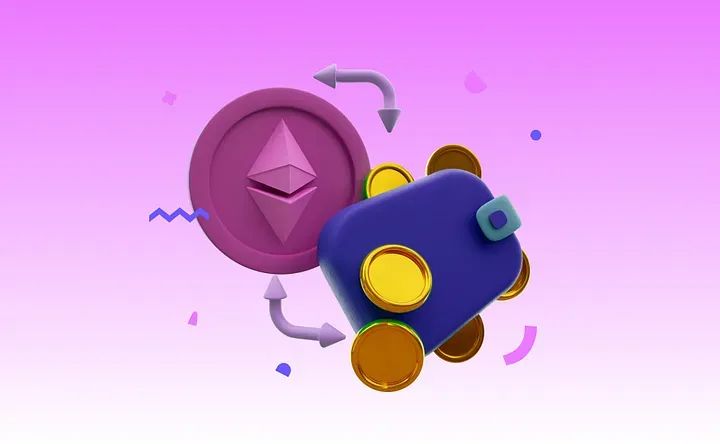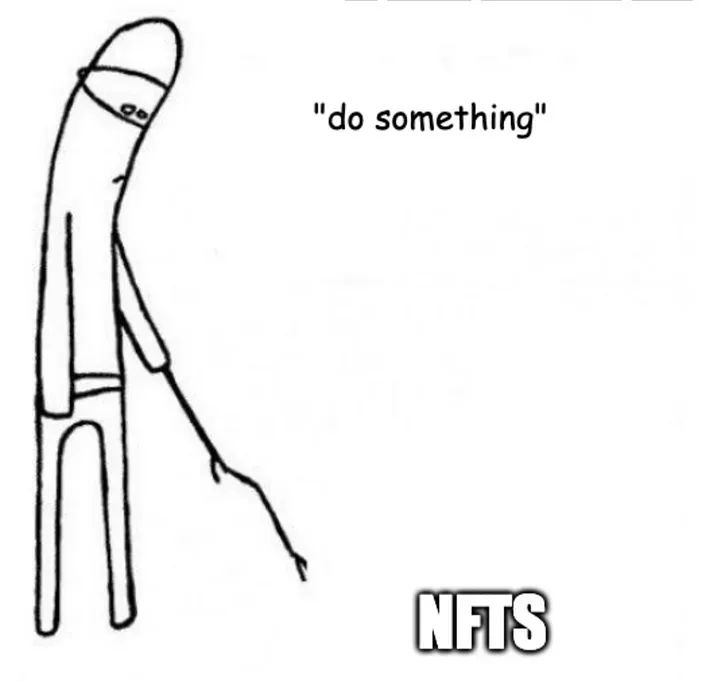How to initiate the NFT era with ERC-6551?
Starting the NFT era with ERC-6551Author: Kelly Kim@Pinata
Translator: MetaCat
Layout: MetaCat
- IOSG Ventures: Network effects of Web3 game engines
- In-depth explanation of the ERC6551 token binding account protocol, which has recently gained popularity
- Gemini co-founder publishes open letter condemning DCG founder: “Scammer, return the money, or face legal action from both DCG and me.”
Editor’s note: The first iteration of NFT (10k PFPs) is over. It’s time to return to the fundamentals of NFT and rediscover its true mission, such as digital ownership, creator/user rights, and decentralized metaverse. ERC-6551 is an important innovation in the NFT field. Let’s explore it!
The Token Binding Account (TBA) of ERC-6551 reveals a new paradigm. Any single non-fungible token (NFT) can now transcend its traditional role as a purely digital asset and become a fully functional wallet. NFTs are no longer just about having a beautiful appearance, they are also full of vitality.
The impact of this technological breakthrough goes far beyond the scope of art and digital collections. Transactions, games, and countless other industries are ready to embrace this change. The new use case of NFT driven by TBA paves the way for more innovation. It requires a thorough rethinking of how we view on-chain ownership, identity, and value.
This article will briefly introduce the history of NFT, and then delve into the technical complexity behind ERC-6551, compare it with ERC-721, and finally summarize the current use cases, considerations, and limitations of ERC-6551.
The Birth and Evolution of NFTs
2017 was an important year for Ethereum, as ERC-721 paved the way for the tokenization of unique digital assets, and provided a new direction for on-chain ownership and traceability. NFT quickly became the mainstream focus, riding on the popularity wave sparked by breakthrough projects such as CryptoKitties, NBA TopShot, and CryptoPunks.
From developers, creators to short-term traders, NFT is suitable for everyone. Soon, the NFT industry became oversaturated and was disrupted by speculation and hype. By the end of 2022, market confidence began to weaken and began to enter a downturn.
However, faithful builders and followers of the underlying technology of NFT are still exploring the next “breakthrough”. About a year later, the emergence of ERC-6551 injected new vitality into NFT.
What is ERC-6551?
ERC-6551 is an Ethereum standard for token-bound accounts. It was deployed to the Ethereum mainnet on May 7, 2023, by the Future Primitive team (including Benny Giang and Jayden Windle). It makes it possible to create smart contract wallets for every ERC-721 NFT, taking composability, dynamism, and interactivity to a new level.
The proposal was first published on February 23, 2023.
💡 Benny is one of the members of the team that created ERC-721 and CryptoKitties.
What is a Token-Bound Account (TBA)?
A Token-Bound Account (TBA) is a wallet for the interface and registry for creating smart contract accounts that can be owned by ERC-721 tokens. They are directly related to the NFTs that “own” them.
They give NFTs two important properties. The first is the “ability to own assets,” whether they are ERC-20, ERC-721, or ERC-1155. The second is the “ability to participate in community governance” (such as being a signer for multisignature, registering one’s own ENS domain, or voting on community proposals).
Underlying Mechanisms of ERC-6551
Relationship between ERC-721 tokens, ERC-721 token owners, Token-Bound Accounts (TBAs), and registries
As mentioned earlier, the TBA is a smart contract wallet owned by a single ERC-721 NFT. Control is in the hands of the NFT holder, who has the authority to execute on-chain operations through the TBA.
The mechanisms for ERC-6551 TBAs can be divided into three parts:
The Registry
The registry runs two essential functions for creating TBAs:
- createAccount: Deploys a new TBA for an ERC-721 with the specified address.
- account: Generates the TBA address for an existing ERC-721 token.
The Minimal Proxy Contract
Then, each TBA is distributed as an ERC-1167 minimal proxy (MPC) and has immutable constant data attached to its bytecode. There are two reasons for using MPC:
- Cheaper: No need to deploy NFT contracts multiple times, just clone the contract.
- Less work: Only the proxy contract needs to be deployed once.
Interactivity
ERC-721❌ Can’t interact with other on-chain assets.
ERC-6551✅ Able to possess on-chain assets such as ERC20, 721, and 1155, which enhance their functionality or appearance. They allow your NFT to shine with its unique personality and story.
Source of Value
ERC-721❌ Derives from pure speculation and external and/or off-chain activity.
ERC-6551✅ Possesses more value due to its origin and interaction capabilities.
Another advantage of ERC-6551 is its backward compatibility with existing Ethereum infrastructure. They are compatible with ERC-721 tokens themselves, meaning that they do not require deploying new contracts or wrapping existing NFTs. They also work with platforms and tools such as OpenSea, Metamask, and Etherscan.
Use Cases for ERC-6551
Gaming
TBA is a game-changer. Its composability makes it possible to create in-game “inventory” for individual characters. Players will be able to transfer all in-game assets to the character’s “wallet,” providing a seamless player experience and giving them a comprehensive understanding of their achievements.
Community Building
Online community (e.g. NFT projects, DAO) members will have more incentive to participate. The NFTs they initially purchased, whether PFP or membership cards, will accumulate value as they collect relevant tokens, NFTs, or other assets.
Membership, Loyalty Programs, Reputation Systems, On-Chain Identity
If on-chain identity is composed of assets and transactions in a given wallet, then TBA enables NFTs to possess their own identities. They can also interact with dApps independently.
This opens up countless possibilities for loyalty programs and reputation systems. NFTs can allow owners to enter loyalty programs and enjoy benefits, or in the case of loans, NFTs can become tools for verifiable credit ratings.
Considerations and Limitations of ERC-6551
ERC-6551 is relatively new. Despite its groundbreaking technology, the road ahead is still bumpy.
❌ Not all NFTs are supported
Only wrapped versions of ERC-721 are compatible. Checking compatibility is crucial before starting.
❌Lack of Ecosystem Support
Not everyone is embracing the change with open arms. Some existing projects and platforms are not yet attracted to ERC-6551. Especially those who like the ownerOf method*.
❌Security Risks
With great power comes great responsibility. The increase in the value of NFTs means that they will become even more attractive to hackers. To ensure stability and allow the use of higher value assets, ERC-6551 will need rigorous testing.
❌User Experience
ERC-6551 is still in its infancy in this area, so it has received little feedback from users. Although the concept is not difficult to understand in theory, the functionality is entirely new in terms of technology. To help users understand and navigate the technical aspects of token-bound accounts, more attention needs to be paid to the process and intuitive interface.
Conclusion: Looking to the Future
The first iteration of NFTs is over, but its loyal supporters have been waiting for the resurgence of NFTs. Although there is no obvious progress in the application landing, is the ERC-6551 standard leading the natural and necessary progress of digital assets?
ERC-6551 is built on the basis of ERC-721 and achieves meaningful enhancements in functionality, ownership, and interoperability. Although still in the experimental stage, it is obvious that ERC-6551 and token-bound accounts will play a key role in the development of NFTs. The landscape of digital assets is approaching a new horizon. With the help of ERC-6551, a series of new functions will open up more doors for creativity, innovation, and connection.
Note: ERC-6551 proposal details https://eips.ethereum.org/EIPS/eip-6551
Original link: https://medium.com/pinata/a-new-era-erc-6551-and-token-bound-accounts-tbas-de4c7b79a79a
We will continue to update Blocking; if you have any questions or suggestions, please contact us!
Was this article helpful?
93 out of 132 found this helpful
Related articles
- Foresight Ventures: Can Asgard NFT AMM build a new rainbow bridge?
- Decentralized Broker or Protocol? Analyzing the Two Paths to Build the Foundation of DeFi
- Field Investigation: The Darkest Hour Has Not Come, But NFT Will Not Die
- Interpreting the Latest Feature of Mirror – Collectable Embeds: Display, Spread, and Interact
- Decoding RWA: The Most Valuable Encryption Narrative in Compliance Context
- Concerns arise over the association between TUSD and Prime Trust as issues with the minting and redemption system emerge.
- Guide to landing Web3.0 in Hong Kong Cyberport: How to receive a subsidy of 1.3 million and a free office?








